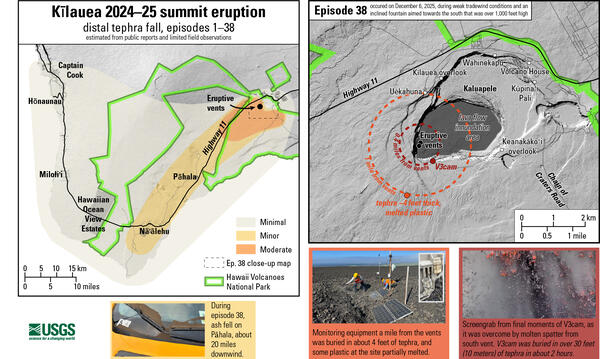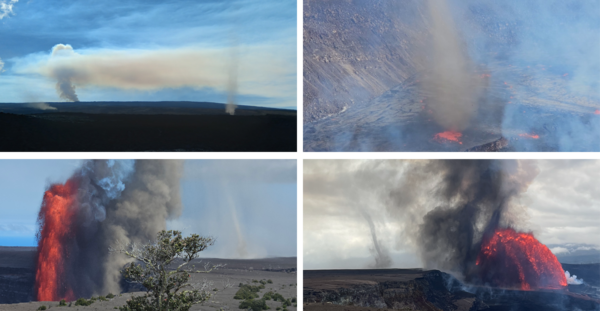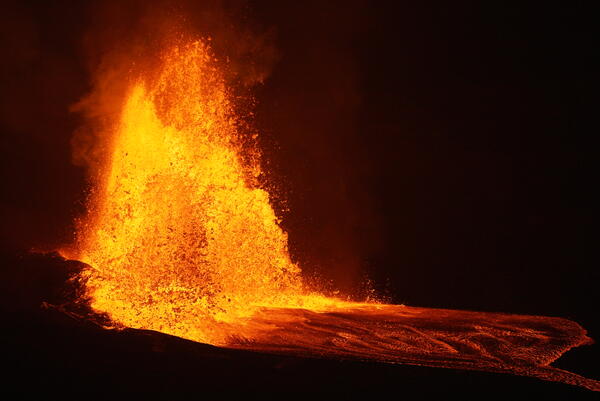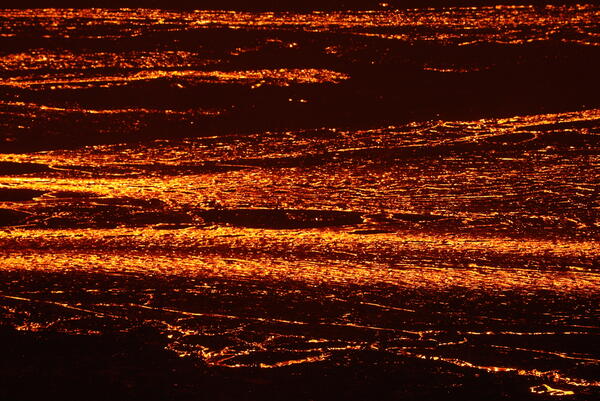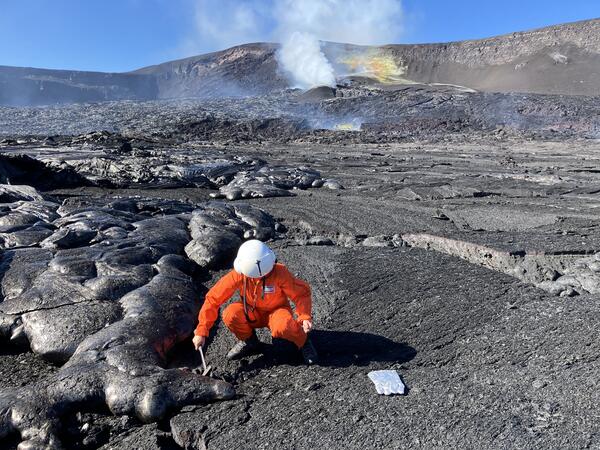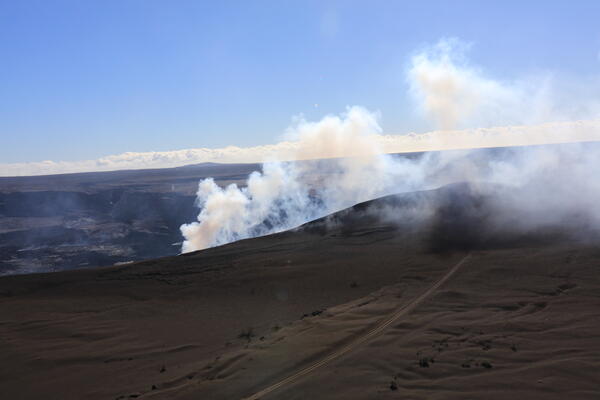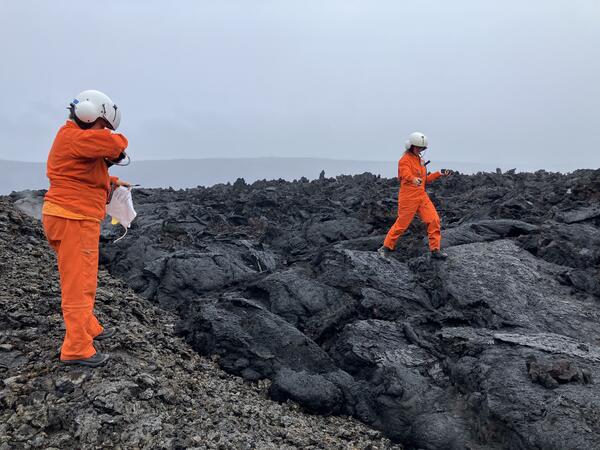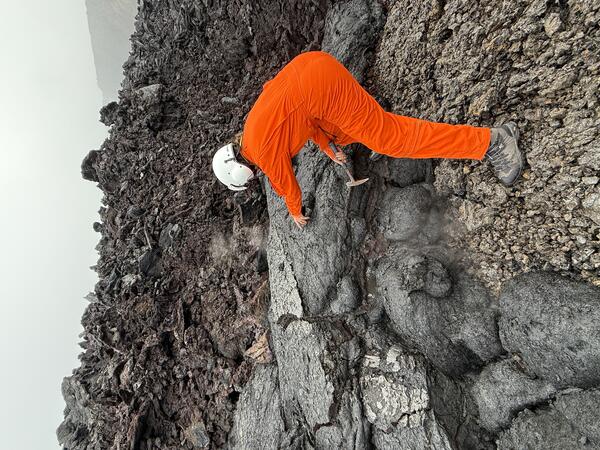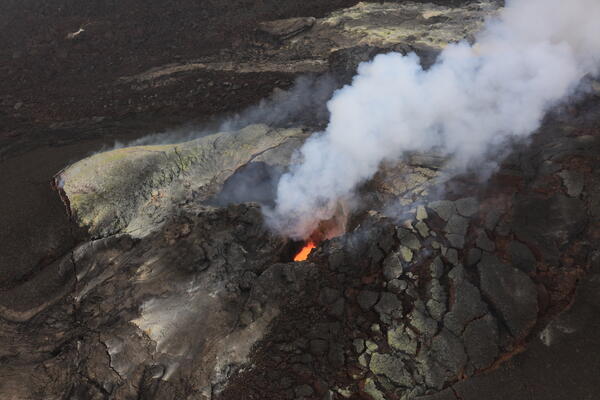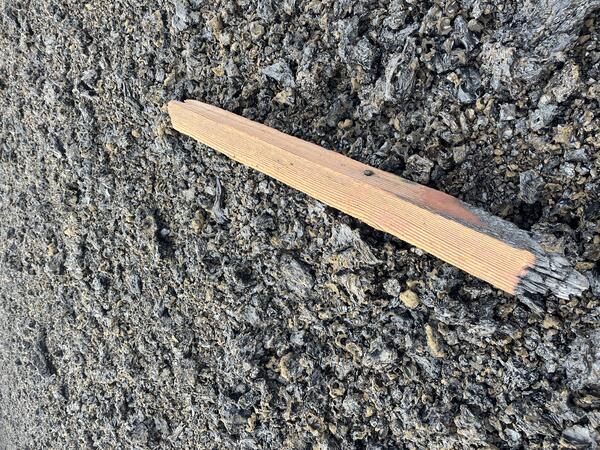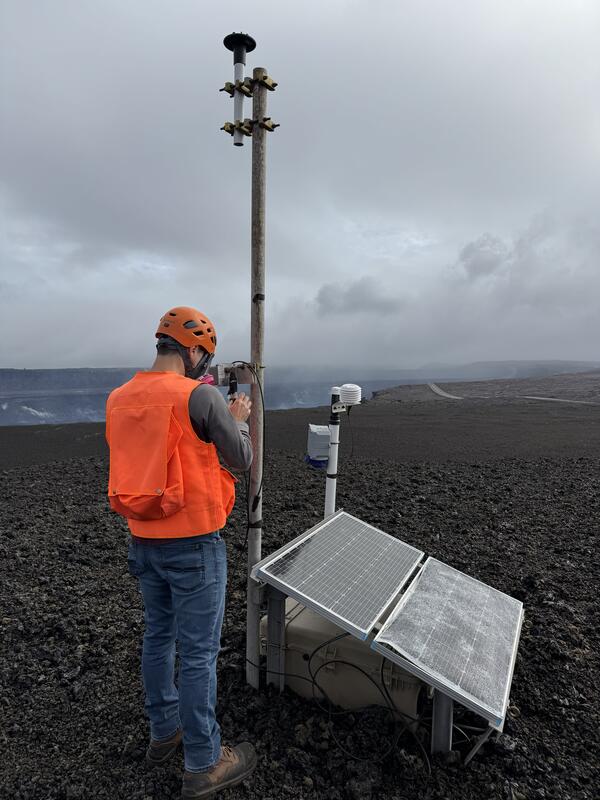December 2, 2025—View of degassing vents and tephra hill, Kīlauea summit
December 2, 2025—View of degassing vents and tephra hill, Kīlauea summitThe north and south vents were degassing during a USGS Hawaiian Volcano Observatory monitoring overflight of Kīlauea summit on December 2, 2025. Eruptive activity at these vents was paused on December 2, following 9 hours of lava fountaining during episode 37 on November 25, but a spattering lava surface was visible deep within both vents. USGS photo by K.




